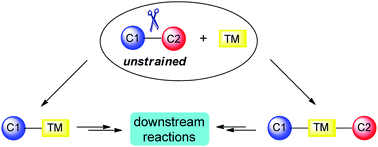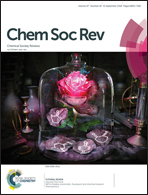Catalytic activations of unstrained C–C bond involving organometallic intermediates
Abstract
The cleavage of C–C bonds has been a great challenge owing to their thermodynamic and kinetic stability. To date, the progress made in this area has mainly relied on the reaction of small rings, which is driven by releasing ring strain. Encouragingly, more and more examples of the cleavage of non-strained C–C bonds have been reported. This review provides a comprehensive overview of the transition-metal-catalyzed C–C bond activation of relatively stable and unstrained molecules that involves the formation of organometallic intermediates. In the first section we focus on the C–C bond activation achieved through β-carbon elimination, and in the second section the oxidative addition of the C–C bond to low-valent metal is summarized in detail.



 Please wait while we load your content...
Please wait while we load your content...